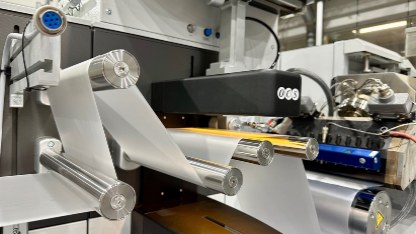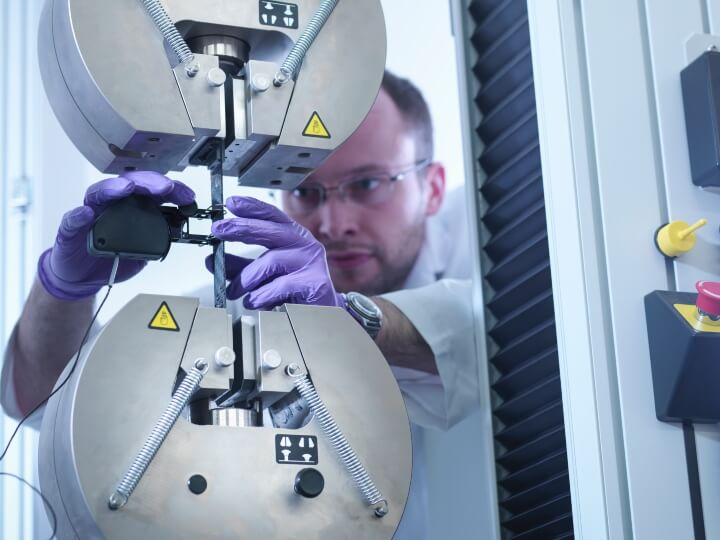Package seal integrity testing by Hot tack test - Hot seal strength testing of thermoplastics, per ASTM F-1921 method B
Measuring heat seal performance by Hot Tack test drives data-led insight to ensure the quality and functionality of thermoplastic seals used in packaging. Understanding the optimum parameters (temperature, pressure and time) for a good heatseal is key to optimizing the production conditions, keeping a product safe from contamination and helps to troubleshooting seal failures.
Hot tack testing assesses the ability of heat seals to withstand high loads and immediate stresses post-sealing. This is particularly relevant in packaging scenarios where contents are filled into bags immediately after sealing. The hot tack strength ensures the heat seal pouch can support heavy content without failing. This packaging seal testing measurement can impact packaging design changes, material sourcing decisions and changes in the packing production processes.
Our scientists regularly perform Hot Tack Strength as per ASTM F1921 (method B). This test measures the strength of heat seals immediately after formation, before they cool to room temperature. This property is crucial in vertical form-fill-seal packaging, where seals must withstand immediate loading after sealing. We measure these key parameters:
• Threshold Sealing Temperature: The minimum temperature required to achieve adequate hot tack strength.
• Seal Strength: Maximum peak force the seal can withstand.
• Hot Tack Temperature Range: The range of temperatures where the seal maintains sufficient hot tack strength.
We have supported global packaging innovators and brands from around the world to develop and validate new packaging materials and new applications through packaging testing and advisory expertise. Examples include quality assurance testing to determine variations in sealing parameters across suppliers and even within rolls of film and troubleshooting issues such as weak seals, leaks, and inadequate sealing which can arise from minor deviations in materials.
Discover how Intertek team can apply hot tack testing as part of a robust quality control system for your products and processes to help you ensure that heat seals meet the required strength and integrity standards for various packaging applications. Leverage the precise data and insights from our test programs to enhance your production processes, minimize seal failures, and ensure consistent packaging quality. Reach out now to start the conversation.
Related links:
- Adhesives Testing
- Packaging Testing
- Food Contact Materials and Food Packaging Analysis
- Cosmetics Packaging Testing
- Film and Flexible Packaging Materials Characterization
- Intertek Packaging Services
- CircularAssure - Testing and Assurance for Recycled Plastics
- Polymer and Plastics Testing
- Polymer Processing Support
- Testlopedia - The Plastics Testing Encyclopedia

Food Contact Materials Testing & Food Packaging Analysis
Food contact materials testing to demonstrate regulatory compliance through experienced laboratory services

Non-Intentionally Added Substances and NIAS Testing for Food Contact Materials
NIAS testing for food packaging safety helping you to mitigate potential health risks

Migration Testing for Food Contact Materials (FCMs)
Food contact material (FCM) migration testing studies including overall migration and/or specific migration

Plastic Film Testing for Quality and Performance
Plastic film testing for quality and performance using factors like gel count and a range of mechanical, physical and optical property testing

Testing Primary Aromatic Amines in Food Packaging
Testing for primary aromatic amines in food packaging materials is key to regulatory compliance for plastic food contact materials

Testing the Physical Properties of Packaging Materials
Hot Tack Testing
Trace Metals Testing for Food Contact Materials
